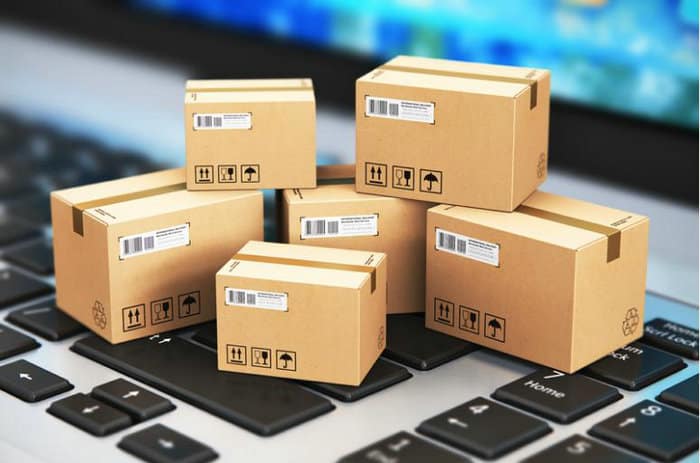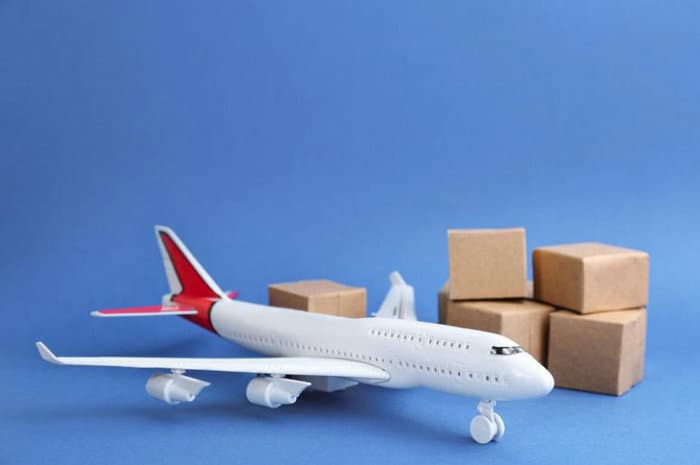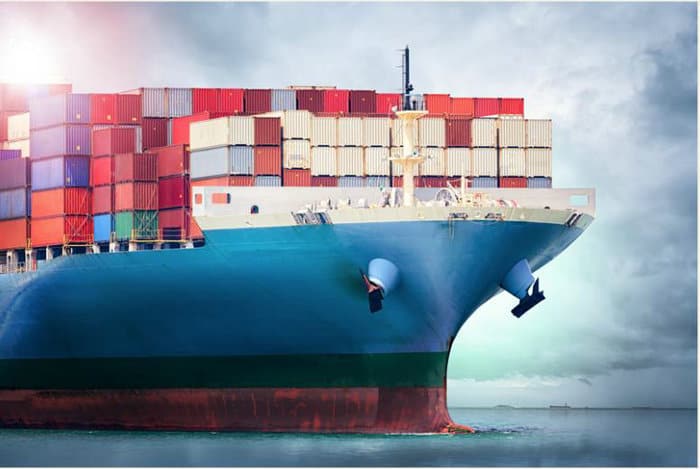
Shipping goods from China to Argentina involves navigating a complex network of trade regulations, logistics, and international relations. As one of the world’s manufacturing powerhouses, China is a critical source for a plethora of products, ranging from electronics to clothing. For businesses in Argentina looking to import these goods, understanding the nuances of the shipping process is essential for a smooth transaction and delivery.
Your journey in transporting items from China to Argentina starts with choosing the right shipping method. Air freight can be faster yet more expensive, while sea freight offers larger volumes at a lower cost, though it takes longer. It’s crucial to weigh these options against your budget, timeline, and the nature of your goods. Familiarizing yourself with the required documentation, such as commercial invoices, packing lists, and certificates of origin, will help avoid customs delays.
Additionally, keeping abreast of the latest tariffs, taxes, and bilateral trade agreements between China and Argentina can significantly influence your shipping costs and strategy. As these economic factors can fluctuate, maintaining an up-to-date understanding of the current market conditions will be advantageous for your import activities. Building a relationship with a reliable freight forwarder or logistics partner can also provide valuable support in managing the shipping process, ensuring that your cargo reaches its destination in Argentina efficiently and effectively.
Understanding the Shipping Process
When importing goods from China to Argentina, you need to be aware of the comprehensive procedures, starting from Chinese export protocols to Argentine import regulations.
Exporting Goods from China
To successfully export goods from China, you must ensure compliance with several key steps:
- Contract with a Supplier: Confirm that you have a legally binding contract with your Chinese supplier covering all critical aspects of the transaction.
- Secure an Export License: Your supplier is responsible for obtaining the necessary export license when shipping goods out of China.
- Comply with Shipping Terms: Understand International Commercial Terms (Incoterms) that define the responsibilities and risks between you and the exporter.
- Prepare Documentation: Compile essential documents, including a commercial invoice, packing list, and any relevant export permits.
Import Regulations in Argentina
Once your goods arrive in Argentina, they will be subject to the local import regulations, which includes:
- Customs Declaration: Submit a detailed customs declaration to Argentinian authorities upon the arrival of the shipment.
- Pay Import Duties: Depending on the product category, you’ll be required to pay corresponding import duties and taxes based on the Harmonized System codes.
- Adhere to Import Licensing: Some goods may require specific import licenses; ensure you check for such requirements before shipment.
- Complete Required Inspections: Certain goods will be subject to inspections and must meet Argentina’s safety and quality standards.
Navigating the export and import processes requires attention to detail and a clear understanding of both countries’ regulatory environments.
Choosing the Right Shipping Method
Selecting the right way to ship from China to Argentina is crucial for efficiency and cost-effectiveness. Your choice impacts transit time, freight rates, and the nature of the goods you can transport.
Air Freight

Air freight is the fastest option for transporting goods between China and Argentina. Typically, air cargo transportation can be expected to take approximately 3 to 5 days. However, this speed comes at a higher cost compared to other methods. Air freight is typically priced by weight, so it is most cost-effective for lighter, less bulky items.
Argentina’s main international airport is Ministro Pistarini International Airport (EZE) located in Buenos Aires. This would be the arrival airport for air freight shipments from China to Argentina.
- Speed: 3-5 days
- Cost: High
- Best for: Light and high-value goods
Sea Freight

Sea freight offers a more economical solution for shipping containers. The transit time is significantly longer, taking around 30 to 40 days to reach Argentina from China. Costs are generally calculated per container, and options include Full Container Load (FCL) or Less than Container Load (LCL). FCL is recommended for large volume shipments typically above 10 CBM or that fill an entire container. LCL is better for smaller shipments between 1-10 CBM that don’t require a full container.
The main port in Argentina is the Port of Buenos Aires. Other major ports include Rosario, Bahía Blanca, Mar del Plata, etc.
- Transit time: 30-40 days
- Cost: Container Size Estimated Cost 20’ FCL shipping $1,500 – $2,500 40’ FCL shipping $2,800 – $3,800 LCL shipping Depends on volume
- Best for: Large and heavy shipments
Rail and Road Options
While not as prevalent for international freight between China and Argentina due to the geographical distance and logistical challenges, rail, and road options are sometimes used in conjunction with other shipping methods for inland transportation. This option is viable when goods arrive in port cities and need to be transported inland within Argentina.
- Transit time: Varies based on distance and geography
- Cost: Moderate, but depends on distance
- Best for: Inland transportation and combined shipping methods
Cost Considerations
When transporting from China to Argentina, your shipping rates will be influenced by several major factors: freight charges, customs duties and taxes, and insurance costs.
Freight Charges
The amount you pay for freight charges is determined by the mode of transport (air or sea), the weight and volume of your cargo, and the type of service (standard or express). For instance:
- Sea Freight: Typically charged per container; a 20′ container can cost approximately $1,500 – $2,500.
- Air Freight: Generally costs $2 – $5 per kilogram, with a higher cost for express services.
Customs Duties and Taxes
Your shipment’s total cost is significantly impacted by Argentina’s customs duties and taxes. These are calculated based on the following:
- Value of the goods: The Customs Import Declaration fee applies.
- Product category: Import duties vary, usually 0-35% of the item’s CIF value.
Here is a basic breakdown of potential fees:
| Fee Type | Basis for Calculation | Approximate Cost |
|---|---|---|
| Import Duty | CIF Value of Item | 0-35% |
| VAT | CIF Value + Import Duty | 21% |
| Statistics Fee | CIF Value | 0.5%, min $10, max $100 |
| Import License Fee | Variable | Dependent on cargo and license |
Insurance Costs
To safeguard your shipment against loss or damage, you will need to factor in insurance costs. The cost generally is:
- 0.3% – 0.5% of the CIF value for regular goods.
- Potentially higher for valuable or high-risk items.
These rates are indicative and can vary based on your specific shipment details and insurance provider terms.
Timeframe and Tracking
When you ship goods from China to Argentina, understanding the timeframe and having the ability to track your shipment is crucial for planning and logistics management.
Modern logistics enable real-time tracking of your cargo, allowing you to monitor its progress throughout the journey:
- Sea Freight Tracking: You typically receive a tracking number and can use the shipping line’s website to track your container’s status and location. Key updates include departure, estimated arrival, and customs clearance.
- Air Freight Tracking: You’re provided with an airway bill number which you can use on the carrier’s website to track the flight status and freight handling.
- Courier Tracking: A tracking number allows you to track your shipment through the courier’s website, offering detailed updates with estimated delivery dates and times.
Logistics Planning
Effective logistics planning is essential to ensure a successful shipping experience from China to Argentina. You should consider the intricate details of inventory management and appropriate packaging and labeling to mitigate risks and streamline your shipping process.
Inventory Management
Inventory Accuracy: Begin with ensuring your inventory records are accurate. An up-to-date system that reflects real-time stock levels is crucial for avoiding overstocking or stockouts. Utilize automated tracking systems to monitor your inventory.
Stock Control: Implement stock control measures to manage the shelf life of products properly and to optimize the flow of goods.
Packaging and Labeling
Packaging Standards: Your products need to be packaged securely for long ocean voyages. Use sturdy boxes, bubble wrap, or other cushioning materials, and ensure packages are waterproof.
Labeling Compliance: Labels must comply with both Chinese export regulations and Argentine import regulations. They should include:
- Product Description: Clear and precise.
- Country of Origin: Labeled as ‘Made in China’.
- Weight and Dimensions: Accurate and visible.
- Handling Instructions: Such as “Fragile” or “This Side Up.”
Customs Clearance
When shipping from China to Argentina, understanding and preparing for the customs clearance process is crucial to ensure a smooth and timely delivery of your goods.
Documentation Requirements
To clear customs in Argentina, your shipment from China requires a comprehensive set of documents. The essential paperwork includes:
- Commercial Invoice: It should detail the goods’ value, description, and HS code.
- Packing List: Lists all included items and their corresponding weights and measurements.
- Bill of Lading/Airway Bill: Acts as a contract of carriage and receipt of goods.
- Certificate of Origin: Verifies the products were manufactured in China.
- Import License: Required for certain controlled goods before shipment.
- Insurance Policy: If applicable, to cover shipment against damage or loss.
Failure to provide these documents may result in delays or additional fees.
Clearance Procedures
Upon your shipment’s arrival in Argentina, the following clearance procedures will take place:
- Submission of Documents: Submit the above-mentioned documents to the Argentinian customs authorities.
- Verification: Customs officers will verify the accuracy and completeness of all documents.
- Inspection: Your shipment may be subjected to physical inspection to ensure compliance with regulations.
- Duties and Taxes: Calculation and payment of applicable duties, taxes, and additional charges must be settled.
- Release: Once all duties and verifications are complete, your shipment will be released for pickup or delivery.
Remember, customs regulations are subject to change, so always check for the latest procedures and requirements.
Cargo Safety and Insurance
In shipping cargo from China to Argentina, understanding the risks and ensuring adequate insurance coverage are crucial steps in safeguarding your investment.
Risk Assessment
When you ship cargo from China to Argentina, it travels over considerable distances, possibly encountering various risks including rough handling, theft, and extreme weather conditions. It is important for you to identify potential hazards your cargo may face during transit. These commonly include:
- Physical damage: Resulting from improper packing or handling.
- Loss: Cargo might become misplaced or lost due to logistical errors.
- Theft: High-value items are particularly at risk during lengthy transits.
- Environmental: Exposure to moisture or temperature extremes can damage sensitive goods.
Insurance Policies
Your cargo’s safety is paramount, and securing the right insurance policy is essential. When reviewing insurance options, you should look for coverage that includes:
- All-risk policies: This provides comprehensive coverage against all potential risks.
- General-average coverage: Ensures you’re protected in case of a general-average declaration.
- With particular average (WA): Covers partial losses directly caused by a peril of the sea.
- Free of Particular Average (FPA): Generally the least expensive option, covering only partial losses if the vessel sinks, burns, or gets involved in a collision.
Remember, insurance policies vary greatly, so scrutinize the terms, exceptions, and deductibles to ensure your cargo is adequately covered for the voyage from China to Argentina.
Harmonized System (HS) Codes and Tariffs
When shipping from China to Argentina, you must understand the Harmonized System (HS) Codes and applicable tariffs. HS Codes are a standardized numerical method of classifying traded products. They are used by customs authorities around the world to identify products when assessing duties and taxes and for gathering statistics.
Argentina’s Customs Tariff is aligned with the HS Codes system. Prior to shipping, you should determine the correct HS Code for your product to ensure the accurate calculation of tariffs. This process can be intricate as HS Codes are extensive, with over 5,000 groups of goods categorized in 21 sections.
Here’s how tariffs typically apply:
- Identify your product HS Code: A six-digit code that classifies your goods. This is a universal standard across countries.
- Determine the duty rate: Based on the HS Code, the duty rate applied by the Argentine Customs Authority can be found.
If your goods have the wrong HS Code, you may face delays, penalties, or incorrect taxation.
For precise duty calculations and legal compliance, consider consulting a customs broker or a trade expert. Rates vary according to:
- Product Type
- Country of origin
- Trade agreements
Regularly check the Argentine Customs website or the World Customs Organization for updates, as tariff rates and trade agreements can affect the classification and taxation of your goods.
Local Distribution and Warehousing
When your goods arrive in Argentina from China, understanding the landscape of local warehousing and distribution is crucial to ensure timely and cost-efficient delivery to the final destinations.
Warehouse Facilities in Argentina
Argentina offers a range of warehouse facilities, typically located near key ports like Buenos Aires for seamless transition from import to local storage. Major Features of these warehouses include:
- Storage Capabilities:
- Dry storage for non-perishable goods
- Cold storage for temperature-sensitive items
- Security Measures:
- CCTV surveillance
- Restricted access controls
- Logistics Services:
- Inventory management
- Order fulfillment operations
Last-Mile Delivery Options
Upon leaving the warehouse, various last-mile delivery services are at your disposal. You have:
- Standard Delivery: Generally the most cost-effective option, with delivery typically within 5-7 business days.
- Express Delivery:
- Faster delivery, usually within 1-3 business days
- Higher cost compared to standard delivery
- Specialized Freight Services:
- For oversized or high-value items
- This can include installation and white glove services
Industry-Specific Shipping Solutions
When shipping from China to Argentina, your cargo’s nature greatly influences the handling and transportation requirements. Adhering to industry-specific guidelines ensures compliance and preserves the integrity of your goods.
Perishable Goods
For perishable goods, the key to successful shipping lies in temperature control and expedited transit. Your products will normally be transported using refrigerated containers (Reefers) that maintain specific temperatures. It’s crucial for you to coordinate with shipping lines that offer advanced real-time monitoring systems to keep track of your perishable cargo, ensuring it remains within safe temperature ranges throughout the journey.
- Packaging: Use insulated packaging with gel packs or dry ice.
- Documentation: Ensure all paperwork, including health and safety certificates, is complete and accurate.
- Shipping Options:
- Direct flights for air shipping.
- Shortest possible sea routes for ocean freight.
Hazardous Materials
Transporting hazardous materials requires strict adherence to international and local regulations. You must classify your hazardous goods according to the International Maritime Dangerous Goods (IMDG) code for sea freight or the International Air Transport Association (IATA) regulations for air freight.
- Packaging and Labeling: Utilize UN-approved packaging and clearly label your cargo with the appropriate hazard class and identification number.
- Documentation: Complete a Dangerous Goods Declaration and keep Material Safety Data Sheets (MSDS) on hand.
- Carrier Selection: Work only with carriers certified to handle hazardous goods.
- Emergency Preparedness: Have a response plan in place for any incidents during transit.
Proper planning and working with experienced freight forwarders are your keys to a smooth shipping process.
Resolving Common Shipping Issues
Navigating the complexities of international shipping requires an understanding of the most prevalent issues you might encounter, such as delays and lost cargo, as well as how to handle damage claims efficiently.
Delays and Losses
Time is of the essence in shipping, and delays or losses can be costly. To mitigate these issues, follow these steps:
- Track Shipments: Use the provided tracking numbers to monitor your shipments actively. This enables you to anticipate delays and act promptly.
- Insurance: Secure your cargo with insurance that covers loss and damages. In case of an issue, this will provide financial protection.
- Communication: Maintain clear communication with your logistics provider to receive updates and resolve issues swiftly.
If your shipment is delayed or lost:
- Contact Carrier: Immediately get in touch with the carrier to investigate the delay or loss.
- Documentation: Keep all shipping documents and correspondence organized for reference.
- Contingency Plan: Have a backup plan in place, such as alternative transportation or inventory stocking strategies.
Damage Claims
Handling damage claims requires attention to detail and prompt action.
- Inspection: Upon receipt, inspect your shipment for any damage. Document any issues with photos and detailed notes.
- Report Promptly: Report the damage to the carrier as soon as possible, adhering to their reporting deadlines.
- Documentation for Claims: File a damage claim with the following documentation:
- Photos of damage
- Shipping and receiving documents
- A detailed claim letter stating the extent and cost of damages
Remember:
- The claim process can take time. Stay patient but persistent.
- Keep a record of all communications regarding your claim.
Why Choose Us? Luckystar Logistic
Luckystar, founded in 2022, is a distinguished member of the Federal Maritime Commission (FMC) and operates as a Non-Vessel Operating Common Carrier (NVOCC). The freight forwarding company primarily serves China, the USA, Canada, and Europe, striving to offer top-notch service quality at lower costs. With a core team possessing over 20 years of logistics experience, Luckystar brings substantial expertise to the table. Since its establishment, the company has remained steadfast in its commitment to offering global door-to-door transport and logistics solutions, focusing on reliability, flexibility, and promptness.
We leverage our route knowledge and relationships to optimize logistics, balancing cost, speed, and reliability. We offer the best solution and shipping service from China to Argentina.
Please contact us for further assistance if you have any other questions or need more details on the end-to-end process. We strive to help businesses make informed freight mode selections and facilitate smooth trade flows between China and Argentina.
